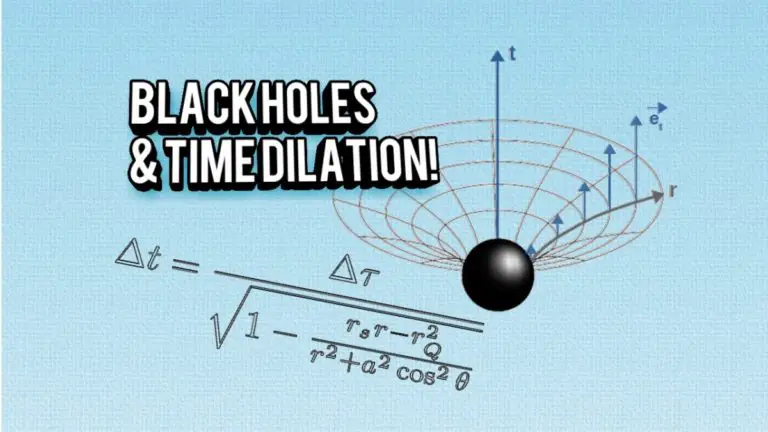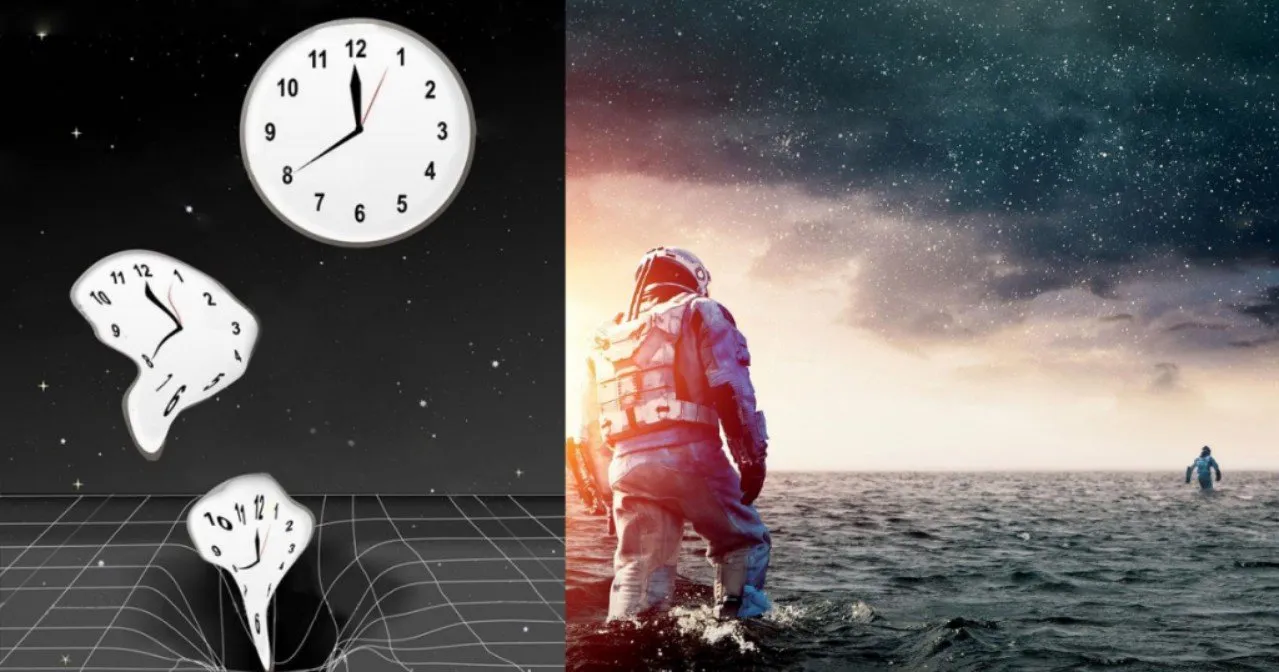When you get too close to a black hole, time begins to act… strange. A second for you could be years for someone watching from afar. This isn’t science fiction—it’s Einstein’s general relativity in action. The concept is called time dilation, and black holes are nature’s ultimate time machines.
At spaceyv, we break down big cosmic mysteries into ideas anyone can grasp. So let’s explore why time dilation happens near black holes and what it tells us about the very nature of time, space, and gravity.
What Is Time Dilation?
Time dilation refers to the phenomenon where time moves at different speeds for different observers depending on their relative velocity or gravitational field strength. There are two types:
-
Special Relativity Time Dilation: Caused by motion—the faster you move, the slower time flows for you.
-
General Relativity Time Dilation: Caused by gravity—the stronger the gravity, the slower time passes.
When it comes to black holes, we’re dealing with the second kind: gravitational time dilation.

What Makes Black Holes So Special?
Black holes are cosmic monsters with gravity so strong that not even light can escape. This happens because all of the black hole’s mass is squeezed into an incredibly small area called a singularity, surrounded by the event horizon—the point of no return.
Here’s where it gets interesting: Einstein’s equations tell us that time slows down the closer you get to a massive object. And black holes? They’re the kings of mass and gravity.
How Einstein Explained It (Without Melting Your Brain)
In 1915, Albert Einstein published his General Theory of Relativity, which proposed that:
Massive objects curve spacetime — and the more massive the object, the more extreme the curve.
Think of spacetime like a rubber sheet. A bowling ball (a star or black hole) creates a deep dent. A marble (you or your spaceship) placed on the sheet rolls toward the dent—not because there’s a force pulling it, but because it’s following the curve in the sheet. That’s gravity.
But here’s the twist: not just space is bent — time is too.
Einstein realized that time itself is a dimension woven into space. Near strong gravity, clocks tick slower. And nowhere is gravity stronger than near a black hole.
What Happens to Time Near a Black Hole?
Let’s break it down with an example:
Imagine an astronaut named Sam hovering safely near the event horizon of a black hole while their friend Alex waits on a distant spaceship far from the black hole.
-
For Sam, only a few minutes pass.
-
But when Sam returns to the spaceship, they discover years have passed for Alex!
To Sam, everything felt normal. But from Alex’s point of view, Sam’s time was moving in slow motion.
Why? Because Sam was in a region of extreme gravity, where time flows more slowly compared to places with weaker gravity. This isn’t just theory—it’s been confirmed by experiments.

Proof That Time Dilation Is Real
It’s not just theory anymore. We’ve observed time dilation:
-
GPS Satellites: Clocks in GPS satellites tick faster than on Earth due to being farther from Earth’s gravity. Engineers must correct for this, or GPS would be wildly inaccurate.
-
Pound-Rebka Experiment (1959): Scientists measured how gamma rays shifted slightly when moved up a tower, due to gravity affecting the passage of time.
-
The Hafele–Keating Experiment (1971): Atomic clocks flown around the Earth in airplanes showed measurable differences in time compared to clocks on the ground.
These are small effects on Earth—but near a black hole, the effects are dramatic.
Can You Use Black Holes to Time Travel?
In a way—yes.
If you traveled close to the event horizon of a black hole (without crossing it), you’d experience less time than the universe outside. When you returned, you’d effectively have traveled into the future.
This is not the time travel of science fiction where you hop into a machine and go backward. Instead, it’s time asymmetry—you experience less time, while others experience more.
This concept was beautifully depicted in Christopher Nolan’s Interstellar (2014), where an astronaut spends hours near a supermassive black hole while decades pass for people elsewhere.

What’s the Event Horizon Got to Do with It?
The event horizon is the invisible boundary around a black hole. Once you pass it, not even light can escape.
From an outside observer’s perspective, someone falling into a black hole never quite crosses the event horizon. They appear to slow down infinitely, getting dimmer and redder (due to redshift) until they vanish.
That’s time dilation in full force: to an outside observer, time stops at the event horizon.
Inside the event horizon? That’s a whole other mystery. According to general relativity, all paths lead to the singularity, and no information can escape. Quantum physics suggests there’s more to the story, but the full picture remains incomplete.
Why This Matters (Beyond Sci-Fi)
Time dilation near black holes isn’t just an abstract idea. It tells us:
-
Gravity affects time—making us rethink what time really is.
-
Black holes aren’t just objects—they are extreme distortions of reality.
-
We need to unify quantum mechanics and general relativity to fully understand the universe.
At spaceyv, we believe these cosmic riddles are key to humanity’s journey through the stars. Understanding how time works near black holes might one day help us build better spacecraft, discover new physics, or even find habitable zones near extreme environments.
Quick Recap for the Curious Minds
✅ Time moves slower near massive objects due to Einstein’s general relativity
✅ Black holes cause extreme time dilation because of their intense gravity
✅ This isn’t science fiction—we’ve tested time dilation with satellites and atomic clocks
✅ Getting close to a black hole could let you time-travel to the future
✅ The event horizon is where time appears to stop for outside observers
✅ Time dilation reveals how deeply connected time and gravity truly are

Final Thoughts from spaceyv
The universe is stranger—and more beautiful—than we ever imagined. Black holes aren’t just cosmic vacuum cleaners; they’re gateways to understanding time itself.
At spaceyv, we’re fascinated by the way Einstein’s ideas continue to shape modern science, from deep-space navigation to gravitational wave detection. The more we learn about black holes, the more we realize how much we still don’t know.
So the next time you look up at the stars, remember: time is not universal—it’s relative. And near a black hole, it might just stand still.
References
Einstein’s General Theory of Relativity – NASA
Time Dilation – Scientific American
The Interstellar Science Behind Time Dilation – Caltech
The Pound-Rebka Experiment – Harvard University
Time Dilation Near Massive Objects – Stanford Encyclopedia of Philosophy



